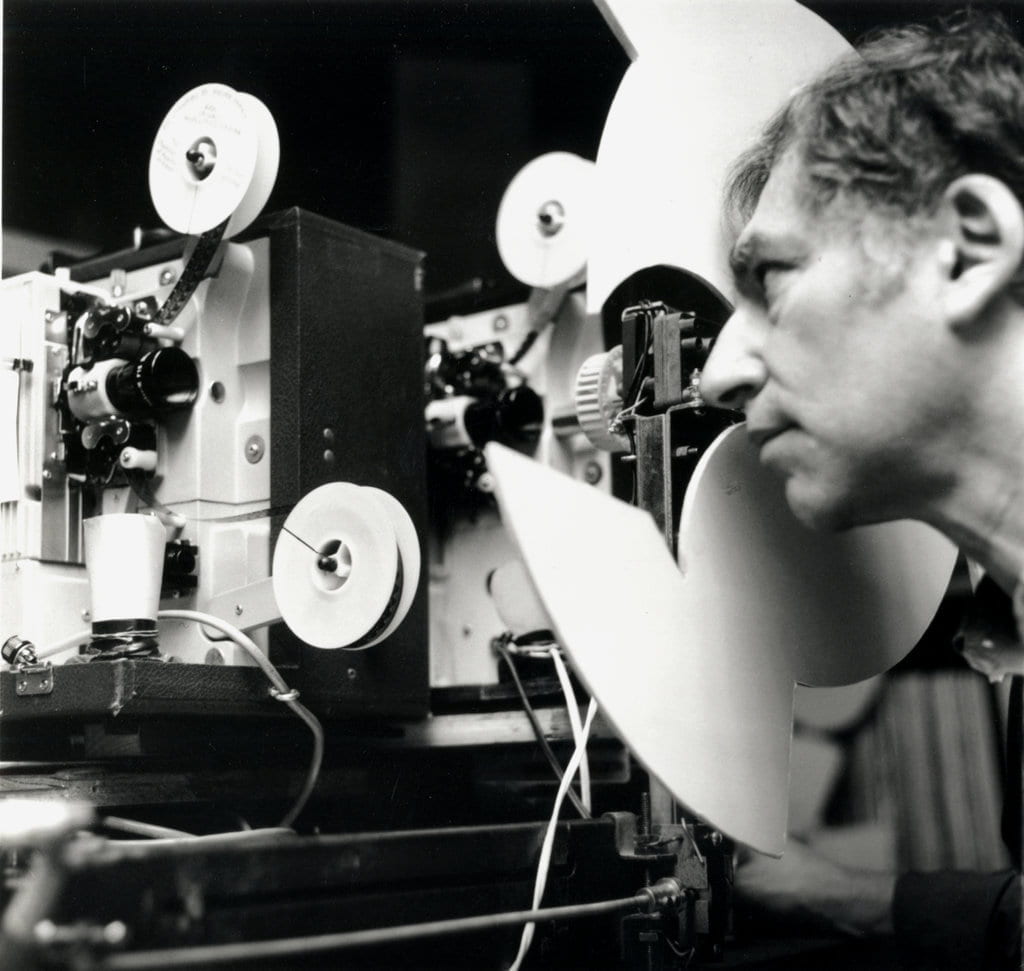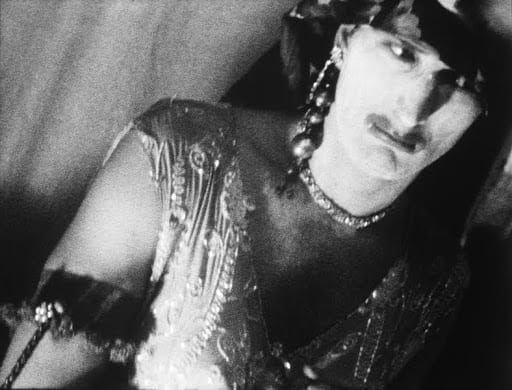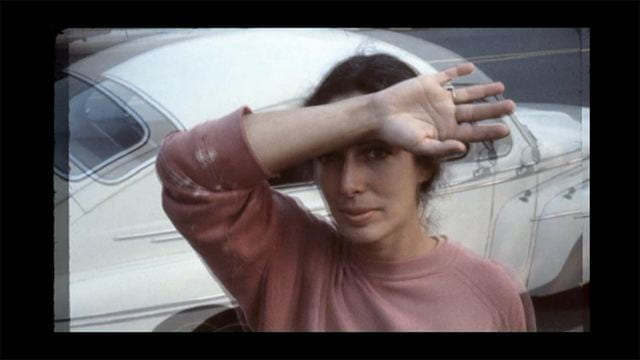
Guest post by Joan Hawkins, Associate Professor of Cinema and Media Studies at Indiana University.
The immediate post-World War II period saw an explosion of formal experimentation across the American art scene. In music, there was jazz, bop, be-bop, and rock ‘n’ roll. Classical music saw the rise of John Cage and experiments that would lead to 1960s minimalism. Painters Jackson Pollock, Mark Rothko, and Willem de Kooning pioneered abstract expressionism in the visual arts, while Merce Cunningham and George Balanchine radically redefined the vocabulary of dance. In literature, there were the Beats: Allen Ginsberg, Jack Kerouac, Lawrence Ferlinghetti, William S. Burroughs. And the world of film saw the emergence of a new American Independent cinema, with narrative storytellers like John Cassavetes and Shirley Clarke at one end of the spectrum and experimental visionary filmmakers like Maya Deren, Stan Brakhage, and Ken Jacobs at the other end.
There were a lot of reasons why the end of World War II saw such a proliferation in the arts. There was the sheer joy that Nazism had been defeated, the renewed freedom of movement once blackout curtains were no longer needed and rationing was over. The Allied victory also meant that international artistic exchange and collaboration could once again take place, and that the avant-garde artists who had fled Europe in the wake of Nazi persecution could return home taking new artistic trends (largely from New York) with them. And more people could learn about such things, thanks to the GI Bill which opened the doors of higher education and, interestingly, art school to many returning GIs.
In the film world, the war had a tremendous impact. Lightweight 16mm and 8mm cameras developed for military use became available for commercial purchase once the war ended. Similarly, faster lenses and high-speed film stock developed during the war trickled down to the home market. Filmmakers — both amateur home movie directors and cinema artists — could now carry portable equipment, shoot in low light, and capture motion in ways that had previously been all but impossible. The effect of these technological advances on documentary film, American Independent film, and experimental film can hardly be overstated.

Ken Jacobs came directly out of this milieu. He studied painting with Hans Hoffman, an important precursor of Abstract Expressionism, from 1956-57; he made his first film in 1955. Devoted to the concept of cinematic art and also to the political potential of films that could be made relatively cheaply (in comparison to studio-shot, 35mm films), Jacobs created the Millennium Film Workshop, a group dedicated to advancing experimental technique and to making tools available to young filmmakers wishing to work outside institutions and studios. The journal Millennium which came out of the workshop remains the pre-eminent journal of note for scholars and practitioners of avant-garde film. In 1966, he started the Department of Cinema at SUNY (State University of New York) Binghamton. He taught cinema from the mid-‘60s until his retirement from teaching in 2000. He has not retired from politics and is the Chair of the UC Berkeley Labor Center; he has never retired from filmmaking, creating a substantial body of provocative, technically innovative, visually beautiful and, frequently, politically engaged works.
Quite simply put, he is one of the most esteemed and important experimental filmmakers of the 20th century, and one of the few who has made a successful transition to the new technology and demands of the 21st century. If pressed, I would describe him as the Godard of American experimental film.





“I don’t offer delusions,” he once famously said of his work. He is perhaps best known for his early film Tom, Tom, the Piper’s Son (1969, 133 min), which is widely regarded as a critical work in the history of structural and found-footage film. He continued experimenting with found footage, slowing down old movie footage, playing with public health films and social guidance movies to create an alternative history of the United States (Star Spangled to Death, 2004, 7 hours) and providing a film platform for Downtown performance artist and Underground film personality Jack Smith (Blonde Cobra, 1963, 33 min). Nissan Ariana Window (1969) and Spaghetti Aza (1976) are beautiful meditations on home life and domesticity. The first features his wife, pregnant with their daughter, suffering the heat of a New York summer. The second shows his son falling asleep over a plate of spaghetti. Like Stan Brakhage, Jacobs used the new formats to present a different view of domesticity and, more importantly, of men’s roles within the family structure. Since 1999 he has been using digital technologies and 3-D, often doing live performances that involve two projectors. This particular performance system was later supplanted by “the Nervous Magic Lantern,” a technique that uses a single projector and eliminates the film strip.
Whether he is using 3-D, magic lanterns, film, video, or performance, his work is always technically innovative and creative. He works closely with his wife, Flo, whom he considers to be his partner and collaborator in art, as well as in life. And with her, he has consistently maintained an anti-capitalist, anti-militaristic political and creative stance. Our screening for the IU Cinema is Razzle Dazzle: The Lost World (2006, 1 hr, 32 min), a metadata film that uses 3-D photographs to create action and narration: soldiers saying goodbye, women waiting, and soldiers returning, and skulls.

About this film, Jacobs writes, “Razzle Dazzle is an early Edison shot cut off at its head and tail and along its four sides from the continuity of events like any camera-shot from a bygone day; no, like any camera-shot, immediately producing an abstraction. This abstraction pictures a great spinning maypole-like device lined with young passengers dipping and lifting as it circles through space. They look out — from their place at the start of the 20th century — with a remarkable variety of expressions, giddy to pensive. We observe them but of course they see nothing of this, our America, hopelessly gone to rot, its mountaintops leveled for extraction of coal, rivers and air polluted, crisscrossed everywhere with property-lines; they don’t see its prisons or the corporations leaning in from their off-shore tax-bases to see what more they can take. Early stereopticon images also appear, digitally manipulated to reveal their depths. A digital shadow falls upon the scene and yet, grim as things get, as our crimes and failures then and now commingle, the movie proceeds with a cubist/abstract-expressionist zest.”
If this seems a bit dizzying, it is. All his professional life, Jacobs has sought to marry aesthetic experimentation with what we might now call political wokeness. Aware that the news washes over us in waves and often leaves us sitting on the couch in numb resignation, Jacobs has sought to use the camera and digital technology to create a political cinema, in the sense that an active audience that has to work just a little will be better equipped to shake off other kinds of passivity.
I said earlier that Jacobs’ message is an anti-capitalist, anti-militarist one. He carries that through to the marketing of his films — he puts his money where his mouth is.
I will be interviewing Ken and Flo Jacobs as part of the Jorgensen Guest Filmmaker series this Friday, December 11 at 7 pm. I hope to see some of you there.
Razzle Dazzle: The Lost World is available to stream at no charge from now until December 14 in the IU Cinema Virtual Screening Room. Only those registered for the December 11 Jorgensen Program with Ken and Flo Jacobs will have access to the film. Both of these events comprise the series Ken Jacobs: Little Stabs at Happiness.
To view more than 200 videos and films by Jacobs, you can access them on the Ken Jacobs Vimeo channel.

Joan Hawkins is an Associate Professor of Cinema and Media Studies in the Media School. She teaches avant-garde and experimental film and is a frequent guest contributor to the blog and to the IU Cinema (via introductions) itself. She saw her first Ken Jacobs film in a classroom at San Francisco State in 1972, and she has been a fan ever since. Her most recent book is William S. Burroughs Cutting Up the Century (IU Press, 2019).